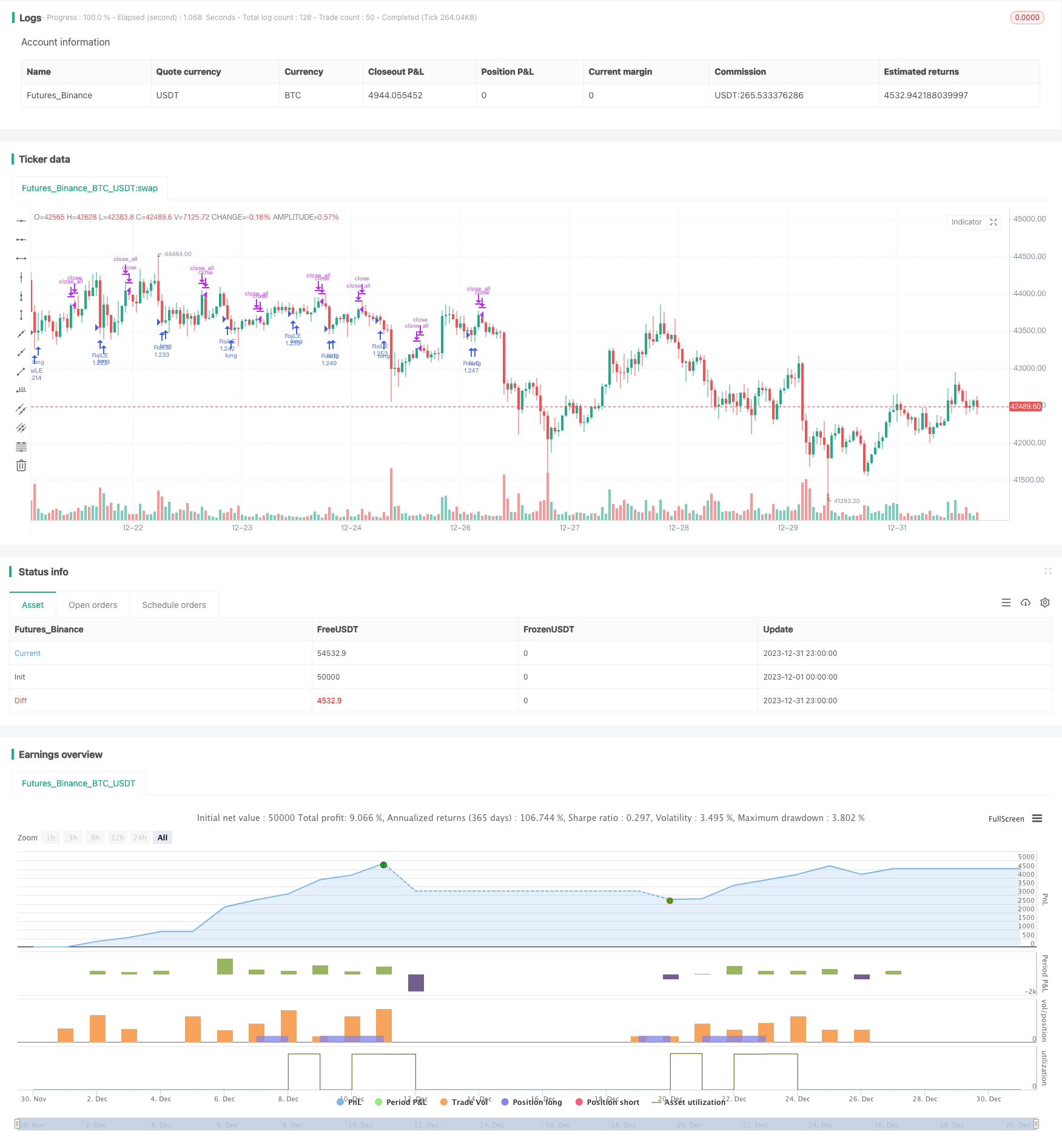
概述
双7日突破策略是一个非常简单的短线交易策略。它只有3个交易规则:
- 价格必须高于200日简单移动均线
- 当价格收盘低于过去7天的最低价时做多
- 当价格收盘高于过去7天的最高价时平仓
虽然规则非常简单,但该策略在一些股票和时间段中表现非常出色,甚至超过许多RSI策略。
策略原理
双7日突破策略利用价格的支撑和阻力进行交易。当价格跌破过去7天的最低价时,说明价格可能进入调整期,这时做多;当价格涨破过去7天的最高价时,说明行情可能转强,应平仓了结利润。
该策略是典型的短线交易策略。它通过7天时间窗口判断最近几天价格行情,利用超短线的突破信号进行入场。同时,它要求价格高于200日均线,避免在长期下跌行情中交易。
优势分析
双7日突破策略最大的优势就是简单易行。它只有3条规则,非常容易实施。且由于信号判断时间窗口很短,交易频率较高,适合短线操作。
另外,该策略充分利用了价格的支撑和阻力进行交易。这类突破信号往往比较可靠,胜率较高。这也是该策略表现出色的原因。
风险分析
双7日突破策略作为一个短线策略,其交易风险主要来自两方面:
- 错误信号风险。当价格出现错误突破时,该策略会产生损失。
- 大盘系统性风险。当大盘出现剧烈调整时,个股之间相关性增大,该策略可能同时持有多个股票仓位,面临较大的市场风险。
为降低这些风险,可以适当调整参数,缩短持仓时间,或结合其他指标进行过滤。当大盘波动剧烈时,应减少仓位规模。
优化方向
双7日突破策略还有进一步优化的空间:
- 可以测试不同的均线参数,寻找更合适的长期指标。
- 可以测试不同的突破周期参数,优化短期指标。
- 可以加入止损机制,进一步控制单笔损失。
- 可以结合其他指标进行过滤,提高信号准确率。
通过参数和策略结构的优化,有望进一步提升策略的稳定性和效率。
总结
双7日突破策略是一个简单高效的短线交易策略。它利用支撑阻力进行突破交易,信号生成频率高,适合短线操作。同时它要求价格高于长期均线,能有效规避长期调整的系统性风险。通过参数和模块的优化,该策略有望获取更出色的表现。
策略源码
/*backtest
start: 2023-12-01 00:00:00
end: 2023-12-31 23:59:59
period: 1h
basePeriod: 15m
exchanges: [{"eid":"Futures_Binance","currency":"BTC_USDT"}]
*/
//@version=4
strategy("Double 7's Strategy", overlay=true, default_qty_type = strategy.percent_of_equity, default_qty_value = 100)
value1=input(7, title="Quantity of day low")
value2=input(7, title="Quantity of day high")
entry=lowest(close[1],value1)
exit=highest(close[1],value2)
mma200=sma(close,200)
// Test Period
testStartYear = input(2009, "Backtest Start Year")
testStartMonth = input(1, "Backtest Start Month")
testStartDay = input(2, "Backtest Start Day")
testPeriodStart = timestamp(testStartYear,testStartMonth,testStartDay,0,0)
testStopYear = input(2020, "Backtest Stop Year")
testStopMonth = input(12, "Backtest Stop Month")
testStopDay = input(30, "Backtest Stop Day")
testPeriodStop = timestamp(testStopYear,testStopMonth,testStopDay,0,0)
testPeriod() => true
if testPeriod()
if (close>mma200) and (close<entry)
strategy.entry("RsiLE", strategy.long , comment="Open")
if (close>exit)
strategy.close_all()